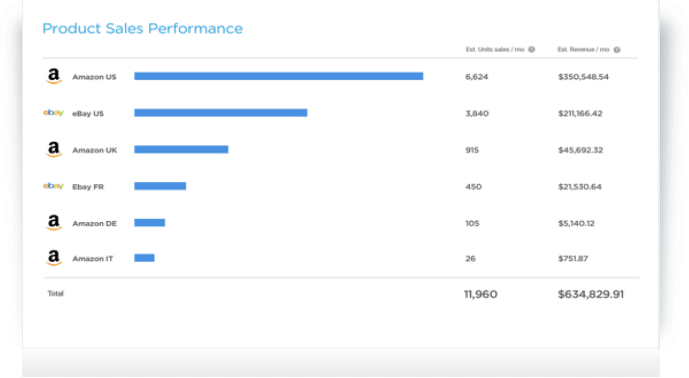How Algopix Works

It all starts with a product of interest. Using a product identifier like ASIN, UPC or EAN, the Algopix engine begins the insights process.

With connection to 17 eBay, Amazon and Walmart marketplaces across the world, Algopix aggregates the most relevant data points.

Using proprietary algorithms to analyze the data, the Algopix engine produces valuable insights for each market including a ‘recommended’ or ‘not recommended’ indicator for sellers looking to make decisions quickly.





With this information in-hand, online sellers can make better decisions about what to buy and where to sell.

And knowing what to buy and where to sell, means higher profits and lower risks.
Understanding the Data
Algopix exists to make it easier for online sellers to collect and utilize the data needed to make critical decisions about their business.
The Algopix Dashboard

The Algopix dashboard provides a quick summary of product data:
- High Profit Opportunity: The market with the highest profit opportunity of the selected markets taking into consideration all related fees and costs. Included beneath the market is the recommended listing price.
- Product Demand Level: The demand level is determined by product interest on search engines and actual product sales across several markets.
- Expenses: Includes shipping costs, marketplace fees, PayPal fees and taxes.
- Profit: The profit after all expenses including merchandise cost.
- Algopix’s Recommendation: Given all of the data collected, Algopix uses an advanced algorithm to produce a recommendation of whether or not this product is likely to be successful given the selected markets.
Product Information

Algopix provides a snapshot of the product including product description, image and product identifiers such as UPC, EAN and ASIN, manufacturer name, model and product dimensions including weight.
Product Price Across Global Online Markets

- Marketplace: The list of markets selected for analysis. Users have the ability to select from a list of 17 markets (9 Amazon markets, 7 eBay markets and Walmart). For the full list of supported markets, please click here.
- Market Price: This is the recommended selling price for the product in that specific market. Algopix takes into consideration all the variables, including the number of sellers, sellers’ feedback and sales history, and uses a proprietary algorithm to calculate market price.
- Purchasing Cost: The price as quoted by a supplier or the price previously paid for existing inventory.
- Breakdown of Expenses: Algopix provides a summary of the expenses associated with selling the research product in the selected markets. With this information, online sellers can calculate expected margin taking into account marketplace (eBay/Amazon/Walmart) fees, PayPal fees (for eBay sellers), FBA fees (for Amazon sellers that use Amazon’s storage solution), shipping costs (based on the product’s dimensions) and taxes.
- Profit: The profit after all expenses including merchandise cost.
- Competition: Based on the number of sellers who offer the product for sale in each market.
- Demand: Algopix provides the demand level based on the volume of sales of the product last month in each market selected during the search process.
- Recommendation: The recommendation is based on profit and demand calculation – if there is a demand to this product on that specific market and the expected profit margin is greater than or equal to 15%, then the product is ‘Recommended’.
Product Sales Performance

- Estimated Units/mo: The estimated number of products sold in the last month. For Amazon, the monthly sales estimate is a calculation based on the product’s Best Sellers Rank combined with additional demand indicators and sales history. For eBay, the monthly sales estimate is a calculation of the actual sales in the last month.
- Est. Revenue/mo: This number reflects the Gross Merchandise Volume (GMV) from the past month. For Amazon, the estimated revenue is the sales number, multiplied by the base price of the product. For eBay, the estimated revenue is the sum of product-related transactions in the last month.
